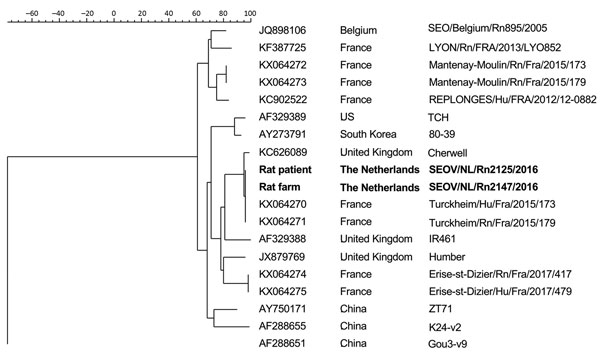Volume 24, Number 12—December 2018
Synopsis
Autochthonous Human Case of Seoul Virus Infection, the Netherlands
Figure 2

Figure 2. Phylogenetic tree calculated for the coding region (1,290 bp) of the small segment of the nucleocapsid protein in the Seoul virus strain implicated in a human case infection in the Netherlands, September 2016, compared with reference viruses. Boldface indicates isolates from this study; GenBank accession numbers are provided for reference viruses.
Page created: November 20, 2018
Page updated: November 20, 2018
Page reviewed: November 20, 2018
The conclusions, findings, and opinions expressed by authors contributing to this journal do not necessarily reflect the official position of the U.S. Department of Health and Human Services, the Public Health Service, the Centers for Disease Control and Prevention, or the authors' affiliated institutions. Use of trade names is for identification only and does not imply endorsement by any of the groups named above.